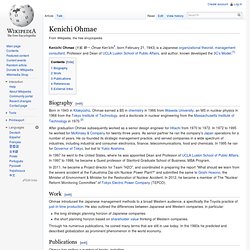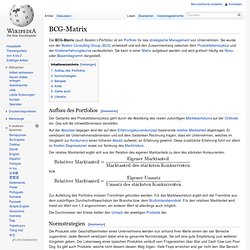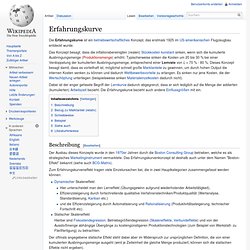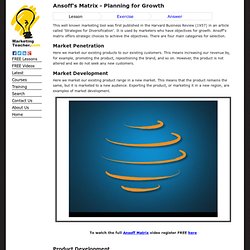

Réinventer la stratégie, une urgence... stratégique ! Le leader de la photographie avait fini par entériner la victoire du numérique sur l'argentique.

Mais, faute d'inventer un modèle économique pour accompagner ce saut technologique et obnubilée jusqu'à son avant-dernier souffle par sa rentabilité, la marque mythique a dû se résoudre au clap de fin. Dans les années qui viennent, tous les secteurs accompagneront dans leur dernière demeure les victimes de ces guerres de retardement perdues d'avance. Le défi que les entreprises doivent relever est redoutable : il consiste à maintenir un cap stratégique quand toutes les composantes de leur environnement se liguent pour les en dévier.
Symbole d'une révolution technologique et surtout sociologique, Facebook n'a pas six ans, mais les nouvelles divinités des réseaux sociaux pressent les marques de refonder leur relation avec des consommateurs de plus en plus volages. Les modes de consommation, jadis rythmés par une ou deux générations, mutent entre l'aîné et le petit dernier d'une même fratrie. Kenichi Ohmae. Kenichi Ohmae (大前 研一, Ōmae Ken'ichi?

, born February 21, 1943) is a Japanese organizational theorist, management consultant, Professor and Dean of UCLA Luskin School of Public Affairs, and author, known developed the 3C's Model.[1] Biography[edit] Born in 1943 in Kitakyūshū, Ohmae earned a BS in chemistry in 1966 from Waseda University, an MS in nuclear physics in 1968 from the Tokyo Institute of Technology, and a doctorate in nuclear engineering from the Massachusetts Institute of Technology in 1970.[2] After graduation Ohmae subsequently worked as a senior design engineer for Hitachi from 1970 to 1972.
In 1972 to 1995 he worked for McKinsey & Company for twenty-three years. In 1997 he went to the United States, where he was appointed Dean and Professor of UCLA Luskin School of Public Affairs. In 2011, he became a Project director for Team "H2O", and coordinated in preparing the report "What should we learn from the severe accident at the Fukushima Dai-ichi Nuclear Power Plant? " The Minto Pyramid Principle: A powerful and compelling process f. Minto.
Barbara Minto .pdf Ebook Download. Businessworld - The Cash Curve. Time-Based Competition: Encyclopedia of Management. The widespread use of just-in-time production (JIT) and other advanced manufacturing techniques has been credited with providing such improvements as decreased inventories, set-up times, downtime and workspace. These decreases have yielded increases in inventory turns, equipment utilization, labor utilization, and ultimately, profit.
Simply stated, this means that finished goods are produced and delivered just in time to be sold, subassemblies just in time to be assembled into finished goods, fabricated parts just in time to go into subassemblies and raw materials just in time to be transformed into fabricated parts. In effect, consumption of time has been reduced. While the JIT philosophy dictates that improvement in these areas be part of a continuous process, it does not have to stop there. Some firms have reduced the consumption of time, not only in the production area, but also throughout the system. JIT was the first manifestation of time-based competition. Ceglarek, D., W. . BCG-Matrix. Aufbau des Portfolios[Bearbeiten] Der Gedanke des Produktlebenszyklus geht durch die Abbildung des realen zukünftigen Marktwachstums auf der Ordinate ein.

Das soll die Umweltdimension darstellen. Der relative Marktanteil ergibt sich aus der Relation des eigenen Marktanteils zu dem des stärksten Konkurrenten: bzw. Zur Aufteilung des Portfolios müssen Trennlinien gefunden werden. Normstrategien[Bearbeiten] Die Produkte oder Geschäftseinheiten eines Unternehmens werden nun anhand ihrer Werte einem der vier Bereiche zugeordnet. Es ist aber nicht nur wichtig, die einzelnen Produkte anhand der Normstrategien zu beurteilen, sondern auch das gesamte Portfolio in Augenschein zu nehmen.
Beispiel[Bearbeiten] Das obige Beispiel-Portfolio ist stark unausgewogen. Eine solche Situation hat auch starke Auswirkungen auf das Unternehmensrating gemäß Basel II. Kritik[Bearbeiten] Ein weiterer Kritikpunkt bezieht sich auf die Wachstumsrate des Marktes, welche im Modell der BCG als gegeben angesehen wird. Erfahrungskurve. Die Erfahrungskurve ist ein betriebswirtschaftliches Konzept, das erstmals 1925 im US-amerikanischen Flugzeugbau entdeckt wurde.

Das Konzept besagt, dass die inflationsbereinigten (realen) Stückkosten konstant sinken, wenn sich die kumulierte Ausbringungsmenge (Produktionsmenge) erhöht. Typischerweise sinken die Kosten um 20 bis 30 % bei einer Verdoppelung der kumulierten Ausbringungsmenge, entsprechend einer Lernrate von L = 70 % - 80 %. Dieses Konzept besagt damit, dass es vorteilhaft ist, möglichst schnell große Marktanteile zu gewinnen, um durch hohen Output die internen Kosten senken zu können und dadurch Wettbewerbsvorteile zu erlangen.
Es sinken nur jene Kosten, die der Wertschöpfung unterliegen (beispielsweise sinken Materialeinzelkosten dadurch nicht). Lesson - Ansoff's Matrix. This well known marketing tool was first published in the Harvard Business Review (1957) in an article called 'Strategies for Diversification'.

It is used by marketers who have objectives for growth. Ansoff's matrix offers strategic choices to achieve the objectives. There are four main categories for selection. Market Penetration Here we market our existing products to our existing customers. Market Development Here we market our existing product range in a new market. To watch the full Ansoff Matrix video register FREE here Product Development This is a new product to be marketed to our existing customers. Diversification This is where we market completely new products to new customers.